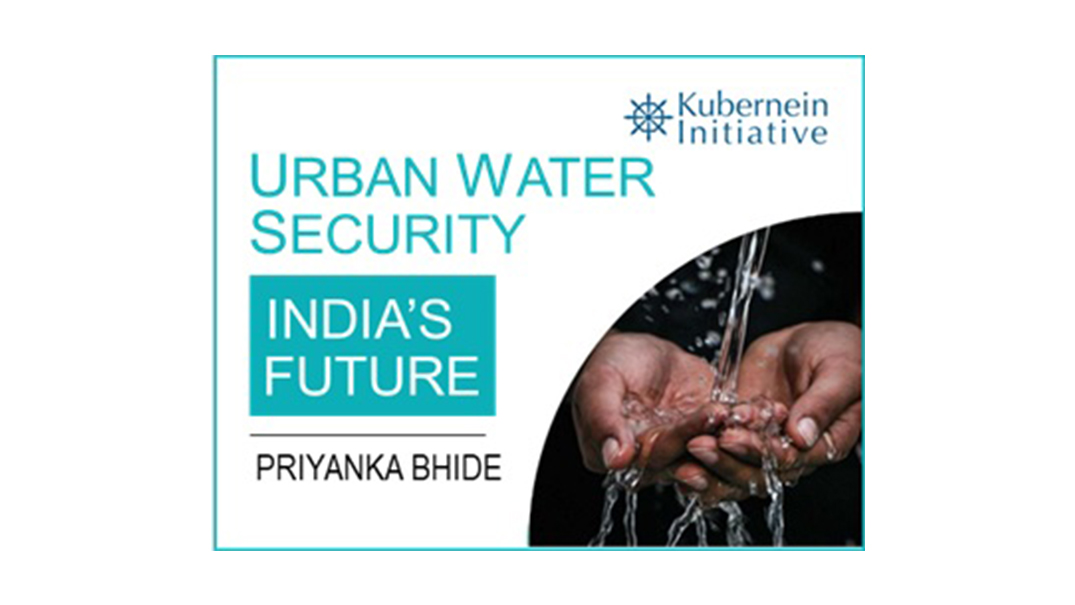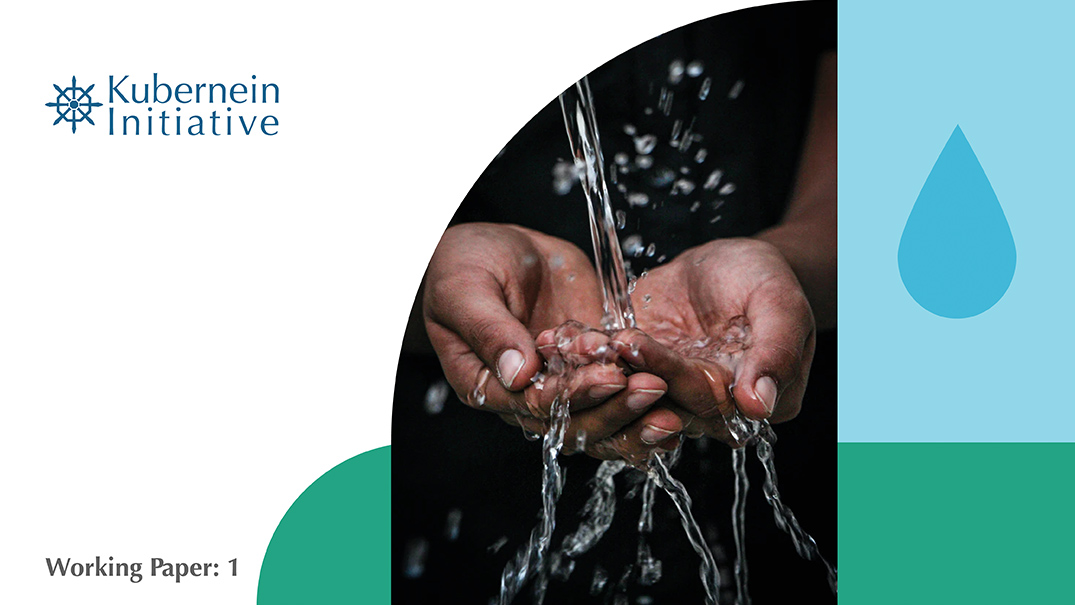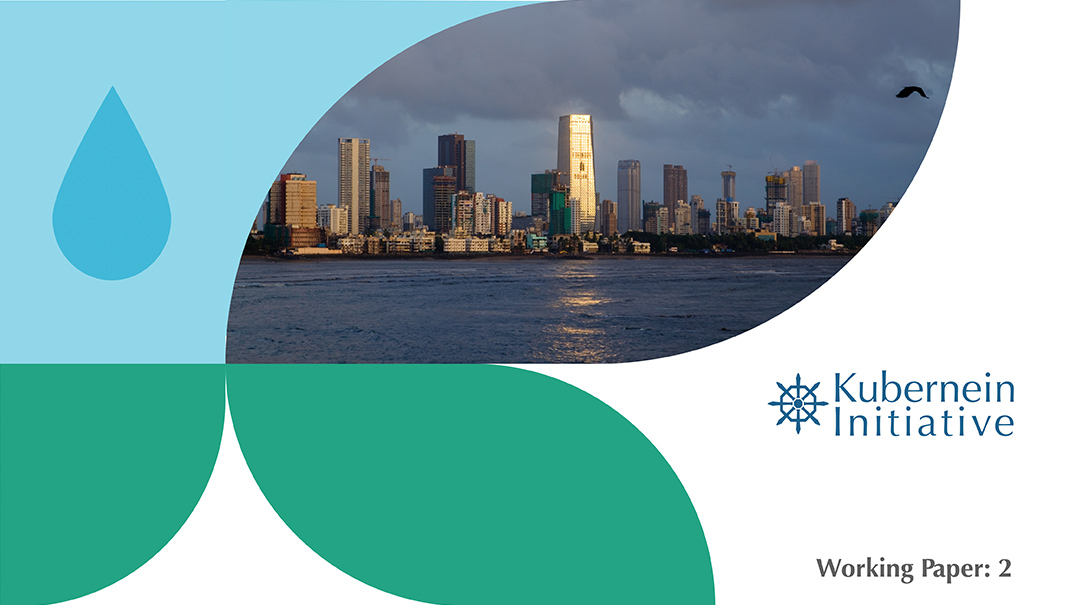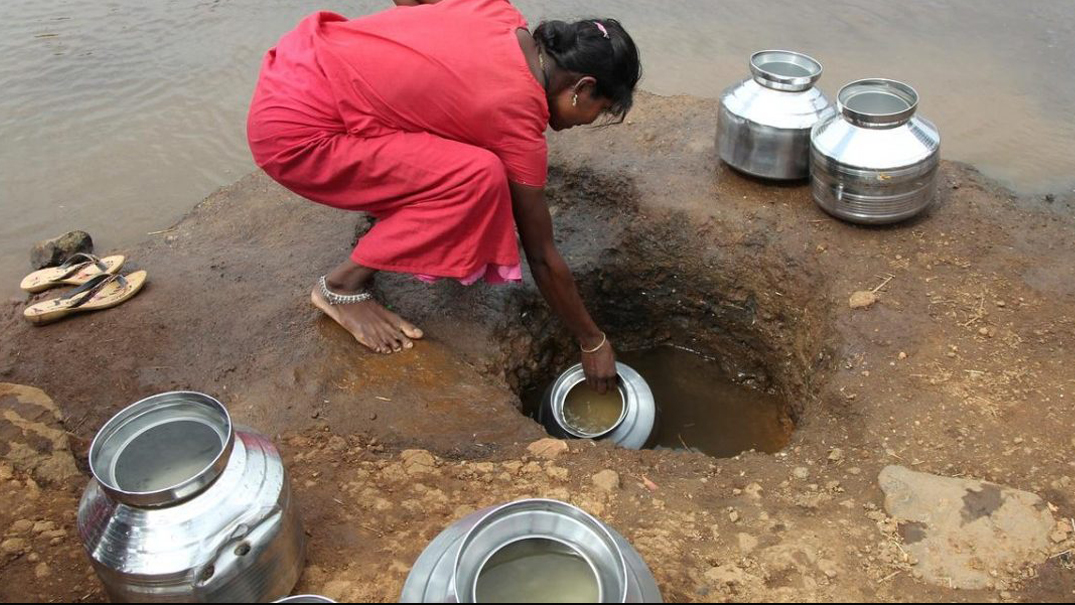Kubernein Initiative’s Bhide shares on how to reduce water stress in 6 Indian cities
The future of India, where it is projected that >50% population will live in urban centres by 2030, will depend on the resilience of cities to support a growing population & face new external shocks
Linkages btwn water security & socio-economic growth must be considered around current & future policy planning, incl. connections btwn water security & econ output, health, energy & food security
Future of water security for cities will depend on an integrated approach that is based on data backed research, innovative technology, & public & private sectors’ investment & participation
This article is based on Kubernein Initiative’s working paper ‘Challenges to Urban Water Security and Growth” that highlights linkages between water and socio-economic growth for six selected cities across India. The paper is part of an ongoing study, which in the next phase will add further depth to the current study, as well as widen the scope to include more cities.
The rapid pace of India’s growth and development has seen a wave of urbanisation sweep across the nation. As a result, cities are expanding with neighbouring areas being absorbed into the existing connecting infrastructure, to keep pace with the growing urban population. It is projected that by 2030, over half the population of India will live in urban centres.
Cities are significant economic contributors to India’s GDP, with USD 5trn target by 2024
Cities are also significant economic contributors to India’s GDP, with a USD5 trillion target by 2024. In such a scenario, the future of the country is highly dependent on the capacity of its cities to both support a growing population as well as be resilient to unforeseen external shocks; be it natural/manmade disasters such as floods/droughts, or even the ongoing COVID-19 and future pandemics.
Indian cities, as of 2020, do not supply 24/7 water to all its residents. While the ambitious Jal Jeevan Mission aims to rectify this by providing potable water connections across the country, its success will depend greatly on the ability of decision makers to treat urban water security as a multi-faceted issue.
Components of water management such as the supply with adequate demand management, alternative sources of water, widespread wastewater and sewage treatment and an integrated circular system, must be considered for the crafting of any policy that is even remotely connected to water. Kubernein Initiative’s working paper on ‘Challenges to Urban Water Security and Growth” highlights, for six Indian cities, the linkages between water and socio-economic growth. Underscoring the connection between water security and economic output, health, energy and food security of a nation.
The paper examines, through secondary research, the varying degrees of water stress in the six selected cities across India that are collectively and individually major contributors to the nation’s economic output, either through production, industrial development, the service industry or by virtue of human resources.
Mumbai, Delhi, Bengaluru, Surat, Chennai & Kolkata face different aspects of water stress
Each of the six cities, Mumbai, Delhi, Bengaluru, Surat, Chennai and Kolkata, in their own way, are important economic contributors and also face different aspects of water stress, including drought, flooding, poor storage and access, contamination of groundwater, and other factors or a combination of issues. The lack of adequate water increases the strain on human capital and ultimately a citizen’s ability to contribute to the country’s growth in a meaningful manner.
Highlights from the six Indian cities included in the study
The paper presents the myriad problems relating to water faced by the six cities, placing it within the perspective of the population and industry at risk.
Chennai and Bengaluru for example, that were once water abundant cities, have both faced severe shortages in the recent past. In both cities, water resources are overworked and overused, and not adequately replenished; instead, many natural spaces that allow for recharge have been built upon and concretised.
By 2030, the gap between demand & supply of water for Chennai could reach 400mn L/day
Chennai is the automobile hub of India, an important IT centre and contributes nearly 40 per cent to the Tamil Nadu’s GDP. All productivity was put at risk in 2019 when the city almost reached day zero following a poor monsoon, with reservoirs at 0.2 per cent of their capacity, and had to rely on water brought in via trains. It is predicted that by 2030, the gap between demand and supply of water for Chennai could reach 400 million litres per day.
In Bangalore it is projected that by 2030, the gap between supply and demand could be as much as 80 per cent. At risk in Bangalore, is the growing population of the city that is home to 40 per cent of India’s IT sector and a start-up ecosystem that attracts an annual investment of USD 3.5 billion.


Mumbai & Kolkata face selective water stress due to unequal distribution, over dependence on monsoon & over-consumption
Similar comparisons are made for Mumbai and Kolkata, that while not yet completely water scarce, face selective water stress largely due to unequal distribution of water, an over dependence on monsoon precipitation, and little attention to over consumption. Mumbai city is responsible for close to 87 percent of Maharashtra’s GDP and includes key industries such as jewellery and leather goods. Kolkata is one of the top performing cities in terms of GDP for the state of West Bengal and the wider North East region.
Delhi, the national capital on the other hand, is naturally water scarce and dependent on neighbouring states for their supply. It is one of India’s fastest growing cities, with a total GDP of USD122 billion (2019) and over 12 per cent average annual growth rate (pre-covid estimates).
Surat declared as the fastest growing city in the country and recognised for the productive strides in water management is still grappling with water insecurity, especially in the summer. Surat’s predicted average annual GDP growth rate from 2019 to 2035 is 9.2 per cent: over 40 per cent of India’s art-silk fabric is produced in the city along with almost 90 per cent of export diamonds in units across the city. For in depth city-wise incites please access the full paper here.
Many challenges to achieving urban water security are common across cities
While several problems are city-specific, many challenges to achieving urban water security are common across cities: knowledge gaps; outdated infrastructure; socio-economic stress; undervaluing water; lack of alternative sources of water; excessive emphasis on the supply side; ad hoc solutions; lack of coordination amongst policy intervention.
Charting the way forward
To achieve Sustainable Development Goal (SDG) 11, that calls for inclusive, safe, resilient, and sustainable cities, there is a need to connect water to all innovation, planning and policy considerations.
Effects of poor water security cannot be solved in a piecemeal manner…
Just as water risks originate from multiple causes, the effects of poor water security are widespread and cannot be solved in a piecemeal manner. The systemic approach to addressing the complexity of urban challenges, which often considers water from the application of a technical and governance approach, must integrate the two tracks while also bringing them into the larger discourse on the impact on economic and social development.
…there is also need to apply a more circular economy thinking
Further there is need to consider water security from a wider perspective and apply a more circular economy thinking and approach. Also, consider the impact of infrastructure development activities on the natural habitats that aid in water conservation and flood prevention, such as marshlands, wetlands, floodplains, embankments, and others.
An integrated, multi-pronged approach is recommended with greater investment in water infrastructure including green and gray infrastructure; renovation and improvement of supply networks; greater use of technological innovations; creation of better community awareness and responsibility; ensure protection of natural sources of water and generation of new sources, and ultimately aim to keep the value of water at its highest.
Based on this preliminary study of six Indian cities this paper makes the following recommendations for the way forward:
- Reliable data on water availability and supply, studied in tandem with the quality and growing needs of citizens, communities and industry.
- Need for use of technology at all stages of water storage, transport and end user supply, to ensure preservation, conservation and a more circular system where possible.
- Greater participation and investment, both financial and R&D, from the private sector.
- Reinforce the understanding that urban management is about aligning governance, public policy, financial and regulatory frameworks and water security initiatives and systems.
Further Reading
- 4 Chinese Lessons For India’s Water Security – India is waking up to its water crises but with 21 cities set to run dry by 2021, urgent action is needed. Kubernein’s Vishwanath shares 4 Chinese lessons India can use to tackle key issues & leapfrog ahead
- Climate Change, Groundwater & Agriculture In India – The hidden risks of groundwater are clear in India as it is key for the country’s food security and already is largely over extracted. What can India do? Dr Aditi Mukherji from the ICIMOD, shares ways forward
- India’s Water Policies: Just Feel Good Documents? – Chetan Pandit, former #2 of India’s Central Water Commission, joins Professor Asit Biswas from the National University of Singapore in a “no holds barred” review on what’s gone wrong with India’s water
- Feeding Ourselves Thirsty: Is the food sector managing water risks? Who is leading and who is lagging? Jacob London from Ceres expands on their report’s key findings but beware – investors are asking more questions
- Water-Energy-Food Security Nexus In Asia’s Large River Basins – The water-energy-food security nexus is complicated but as Maija Taka, Marko Keskinen & Olli Varis show, the tensions can be alleviated. Plus, they share 3 WEF cases in Asia’s largest river basin
More on Latest
- The Rise Of Climate Positive Food – From startups to big food companies, Green Queen’s Sally Ho shows how they are dishing out guilt-free snacks for the planet, from carbon neutral to regenerative agriculture-backed
- Cement’s Role In A Carbon-Neutral Future – Energy Innovation’s Jeffrey Rissman shares how to achieve carbon-neutral for cement production by 2050 with the help of carbonation & potentially becoming a carbon-sequestering process
- Bankable Nature Solutions: A Case Study – Is there a way to stop land subsidence, create climate resilience & raise farmers’ incomes? WWF’s Thomas Gomersall & Jean-Marc Champagne say the integrated rice & shrimp model does exactly that
- 8 Brands Called Out For Greenwashing 2020 – Businesses are more active in caring about people & planet but some are just greenwashing to sell more products & services. Eco-Business’s Robin Hicks called out 8 of them
- Dreaming Of A Regenerative Economy? – Co-founder Dr. Simon J.D. Schillebeeckx explains how Handprint helps restore threatened ecosystems one micro purchase at a time by helping companies to integrate positive impact
This article first appeared in CWR in January 2021.



